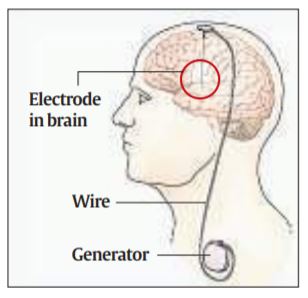
[ad_1]
Physicians at the University of California, San Francisco (UCSF) have successfully treated a patient with severe depression by recognising and tapping into the brain circuits linked with depressive brain patterns. The physicians have tried to reset these patterns, which they have said is the equivalent of using a pacemaker for the heart.
The work, which represents a landmark in the use of neuroscience to treat psychiatric disorders, has been published in the journal Nature Medicine.
The doctors used an existing technique called deep brain stimulation (DBS), customising it for this patient’s case. DBS is a surgical procedure in which electrodes are implanted into certain brain areas. These electrodes, or leads, generate electrical impulses that control abnormal brain activity, according to the American Association of Neurological Surgeons (AANS).
“The electrical impulses can also adjust for the chemical imbalances within the brain that cause various conditions,” the AANS says on its website.
A DBS system has thee components (see illustration):
 Traditional DBS has three components: the electrode or lead; the extension wire, and the internal pulse generator. National Institute for Neurological Disorders and Stroke (US), NIH
Traditional DBS has three components: the electrode or lead; the extension wire, and the internal pulse generator. National Institute for Neurological Disorders and Stroke (US), NIH* The electrode, or lead. This is a thin, insulated wire inserted through a small opening in the skull and implanted into a specific brain area.
* The extension wire. This too is insulated, and is passed under the skin of the head, neck and shoulder, connecting the electrode to the third component of the system.
* The internal pulse generator (IPG) is the third component. It is usually implanted under the skin in the upper chest, according to the AANS.
Conditions that are traditionally treated using DBS include dystonia, epilepsy, essential tumour, obsessive-compulsive disorder and Parkinson’s disease. In treating depression, however, previous clinical trials with DBS has shown limited success because most devices are only able to deliver constant electrical stimulation to one area of the brain, UCSF noted in a press release.
During this treatment, UCSF physicians customised a new DBS device, which would stimulate the brain whenever it recognised the depressive pattern. Additionally, the team of physicians had also found a neural biomarker that indicated the onset of symptoms. Using the customised DBS device, they were able to stimulate a different area of the brain, which in turn created immediate therapy for the brain.
Newsletter | Click to get the day’s best explainers in your inbox
[ad_2]
Source link